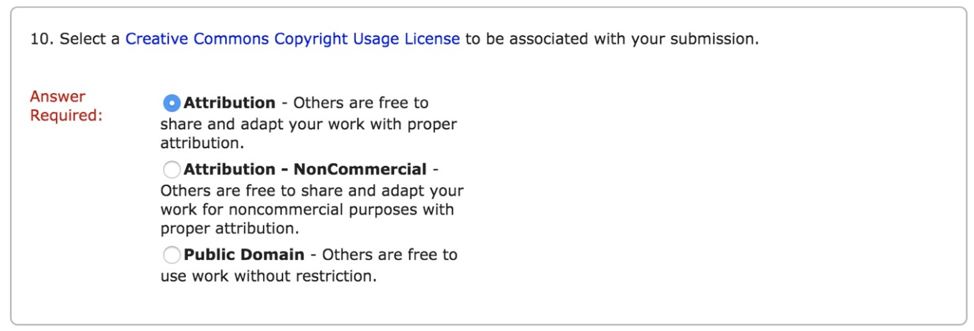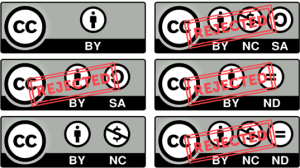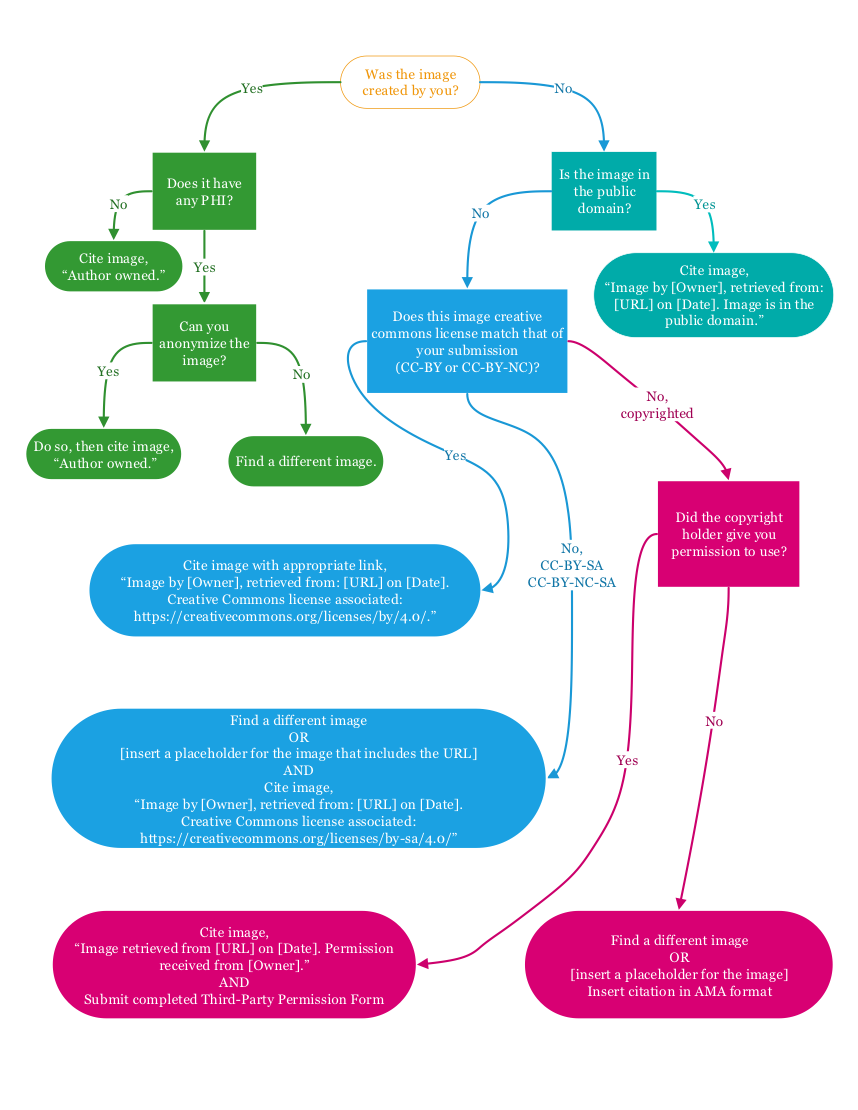Editor’s note: When we changed the 2020 Library Publishing Forum to a virtual conference format, we gave presenters the option of converting their presentations into blog posts. This is a guest post in that series.
By Hannah J. Craven and Rachel J. Hinrichs
Introduction to MedEdPORTAL
Medical educators at our institution are encouraged to publish open educational resources (OERs) in the journal MedEdPORTAL. Published by the Association of American Medical Colleges (AAMC), MedEdPORTAL is a peer-reviewed, open-access journal for medical education scholarship that is now indexed in MEDLINE. These publications contain complete curricula, including objectives, instructor guides, slides, and assessments, ready to be implemented in the classroom. The intended students for the curricula should be training or practicing physicians or dentists, but could also include members of other health professions, as long as there is at least one physician or dentist learner in the classroom. For teaching faculty interested in applying for promotion, MedEdPORTAL can demonstrate the quality of their teaching materials through peer-review, citation counts, and other usage reports.
The Issue
Despite submitting high quality curricula, medical educators receive rejections from the MedEdPORTAL 62% of the time. Reasons for rejection include insufficient educational context and assessment, mismatch of educational objectives and instructional content, and failure to build on existing curricula. Of immediately rejected submissions, 90% also have copyright issues. These copyright issues stem primarily from the use of third-party images. MedEdPORTAL is a member of the Open Access Scholarly Publishers Association (OASPA), and therefore has strict requirements for copyright and licensing images in the education materials. These requirements can be difficult for medical educators to navigate.
Copyright and Licensing in MedEdPORTAL
MedEdPORTAL requires that authors on the last question of the submission form select a Creative Commons license for their work. We always recommend the Attribution (CC-BY) license as it is the least restrictive, without putting the work in the public domain.

All images not created by the author must be either in the public domain, or have a CC-BY or CC-BY-NC license. MedEdPORTAL will not publish share-alike-licensed images. For images not in the public domain or with Creative Common licenses, authors must obtain permission from the copyright owner. If permission is not obtained, the image must be removed and a placeholder with a citation to locate the original image added. If permission is obtained, a Third-Party Permission Form for the image must be included in the submission.

An image also cannot include any personal health information. All names and IDs should be blacked out, as well as eyes in photographs to anonymize the patient.
We use the decision tree below for each image to figure out if we can include an image and how to properly cite it:

The Role of the Librarian
Librarians with interest/experience in Open Education Resources, Open Access, Copyright, or Creative Commons licensing can support medical educators both passively and actively depending on time constraints and level of involvement needed. Both of us have successfully assisted, trained, and supported authors submitting to MedEdPORTAL. Combined, we have submitted three projects (with librarian listed as a co-author). Of those three, one is in-press and two were resubmitted with edits and undergoing review. A fourth project is now in-progress. Of the edits necessary for the in-press and resubmitted projects, none were related to image use or licensing issues.
Active Support: Co-author, workshops, or consultations
The highest level of support we offer is “Co-author.” The librarian meets criteria for authorship, specifically according to the International Committee of Medical Journal Editors (ICMJE) recommendations.
For the Education Summary Report (ESR), the librarian can perform a literature search of MedEdPORTAL and MEDLINE, or other relevant databases, to show the educational materials being submitted are novel. This must be addressed in the introduction of the ESR and the librarian can contribute by writing up the answer to the following question from the template provided for authors: “Build a case for how your submission represents a unique contribution to existing literature. Reference similar publications in MedEdPORTAL.” The librarian may also manage the citations for the ESR and all other appendices using citation management software.
The bulk of our expertise is in managing the images used within the course materials. This requires a bit of project management skills to keep track of all the following stages. First, an inventory is taken of all images, tables, and figures used in the educational materials. Previously, the materials fell under Fair Use as they were used only in the classroom, so many items are copyrighted. Once the copyright or licensing status of all images is determined, we contact the copyright holders with the permission form and ask if we may use the image in our work. If there is a fee, or the owner says no, the librarian will find an appropriately licensed substitution image or ask if the co-authors would like to use an author-owned image. If the owner of copyrighted material signs the form for use, the form is saved and submitted with the materials.
Another way we provide support is through workshops. Early in 2020, we were able to host a quick 20-minute workshop at a school-wide event with a medical educator. Materials we shared included a slide deck comparison before and after preparing for MedEdPORTAL submission, a completed Third-Party Permission Form, and a handout. Our handout walks educators through questions to consider before preparing a submission. It contains checklists, explanations, an “image screening quiz,” and the image use and citation decision tree shown above. The workshop was received well and had relatively high attendance. This has given us a framework for future library workshops that we plan to host in coming semesters.
The last way we provide active support is via consultations. Our methods for managing the use of images is laid out so the medical educators may handle it themselves. Some medical educators have materials they wish to submit with very few images, requiring little help navigating copyright and licensing issues. The librarian can instead spend the meeting explaining the do’s and don’ts of submissions and provide guidance based on our past experiences as co-authors.
Passive Support: Online resource guide, handout
A resource like our LibGuide, “MedEdPortal submissions & image use” was created to inform authors on the niche issues that come along with publishing in this specific Open Access journal. While participating as a co-author, we would have many questions for the MedEdPORTAL editors. This guide is intended to answer many of those questions that could not be answered directly from the author information page and required an email to the editors. We curated a list of websites to find medical open images, gathered from responses on the MEDLIB-L listserv and our colleagues’ suggestions. Since the guide’s creation in October 2019, the guide has garnered almost 500 views. Of the medical library’s non-departmental guides, it ranks in the top 40% for page views for the same duration.
The handout from our workshop mentioned above has been self-archived in our institutional repository, IUPUI ScholarWorks. We reference people here to help get them started. It is a good tool to have them look through before a consultation.
Conclusion
The partnership between medical educators and librarians for MedEdPORTAL submissions is a mutual benefit. While the faculty learn more about copyright, Creative Commons, and OERs, librarians have an opportunity to participate on a team and co-author publications. Due to the time-consuming nature of the co-authorship level of service, we cannot assist everyone at this level if demand increases. Workshops, consultations, and our online resources will be useful to reach more medical educators interested in submitting to MedEdPORTAL. Our goal is for educators to consider the image use issues from the inception of their educational materials to save time when they prepare to submit.
Key points:
- Librarians can support faculty when submitting to an OER like MedEdPORTAL either passively or actively
- Faculty may be unfamiliar with the nuances of copyright and licensing since they are often operating under Fair Use in the classroom
- Project management skills are helpful for managing the images, copyright forms, and substitutions
This blog post is licensed under a Creative Commons Attribution 4.0 International License by Hannah Craven and Rachel Hinrichs.
Hannah J. Craven
@HannahC_MLIS
https://orcid.org/0000-0002-1701-3655
Ruth Lilly Medical Library, Indiana University School of Medicine, Indianapolis, IN, USA
Rachel J. Hinrichs
https://orcid.org/0000-0003-0762-744X
University Library, Indiana University-Purdue University Indianapolis, Indianapolis, IN, USA
